Have you ever tried cooking with carbon steel pans? I used a few of them back in my professional cooking days, but it took me awhile to buy one for my home kitchen. Now that I have, I’m hooked!
Carbon steel pans have a lot to offer. They’re lighter than cast iron, more non-stick than stainless steel, and more durable than Teflon.
But here’s the thing: you’ve got to season these pans properly to get a natural non-stick surface, and you’ve got to take care of them to keep them at their best.
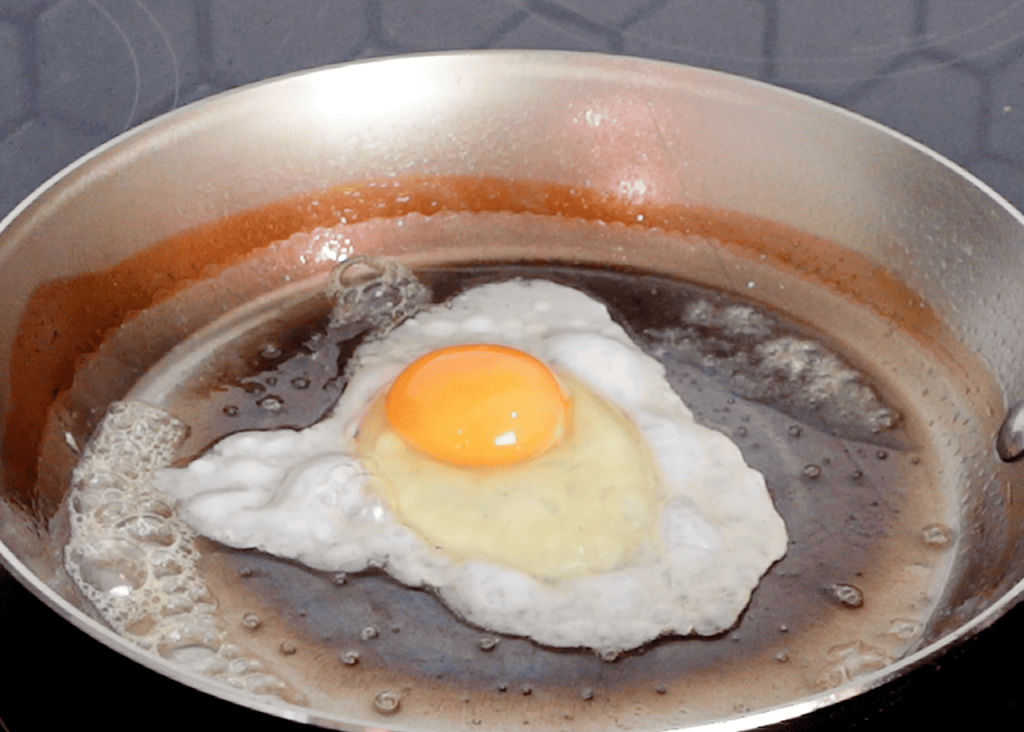
Carbon steel pan benefits
So, why would you want a carbon steel pan? Well, they’re kind of a jack-of-all-trades. They are super tough (arguably indestructible), and they conduct heat really well. A lot of professional chefs swear by carbon steel pans because they’re so versatile and can handle really high heat. They’re great for high-heat methods like stir-frying, searing, and sautéing. One of the key benefits is that when seasoned properly, carbon steel pans develop a fairly non-stick coating, making them a great alternative to Teflon.

Carbon Steel as an alternative to non-stick pans
My biggest beef with non-stick Teflon pans is that they only ever last a year (or maybe a few years) before they lose their non-stick qualities and you have to throw them in the garbage. Not cool!
As for other types of non-stick pans, like non-stick ceramic, they aren’t much better.
Carbon steel pans, while higher-maintenance than Teflon or non-stick ceramic, get better—not worse—over time. In my opinion, it’s an investment of time and energy worth making. Once seasoned, carbon steel is fairly non-stick, but not quite as non-stick as Teflon. You will always need some oil or other fat in the pan if you want your fried eggs to slide around.
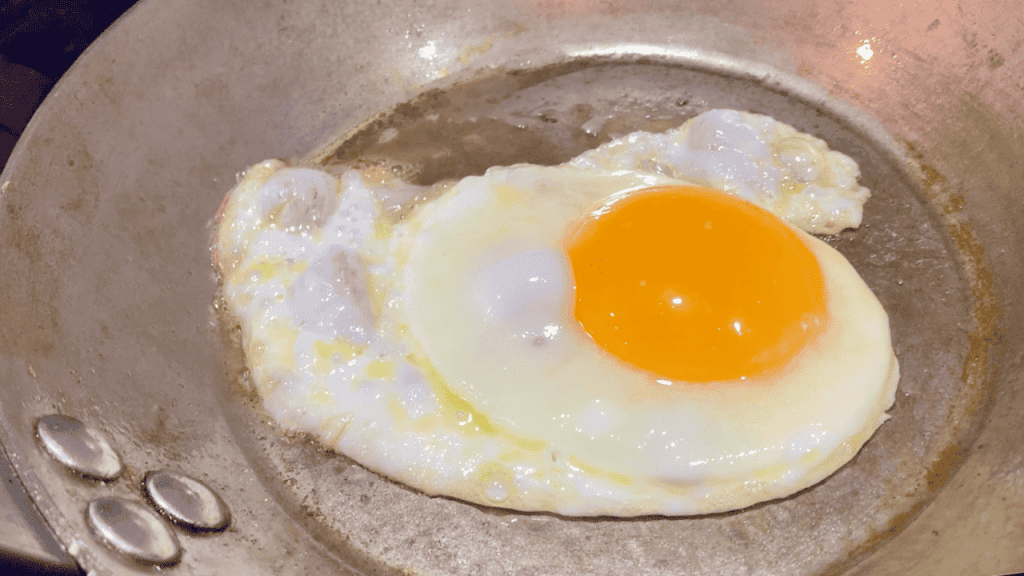
Carbon steel vs cast iron pans
Carbon steel and cast iron have a lot in common. They are both super durable, versatile, and can last a lifetime if treated well. The seasoning and maintenance for both types of pans is more or less identical.
- Season them well the first time
- Wash them with water and a sponge, avoid soap if possible
- Dry them well (they don’t like to be exposed to water for too long)
- Cook with them to keep them seasoned
The main reasons I often opt for carbon steel over cast iron are two-fold.
- Carbon steel pans are much lighter than carbon steel, making them easier to lug around and cook with
- The sides of carbon steel pans are more sloped, making it easier to toss, sauté, and flip things!
I love all my forever pans and use them for different reasons, to suit different moods!
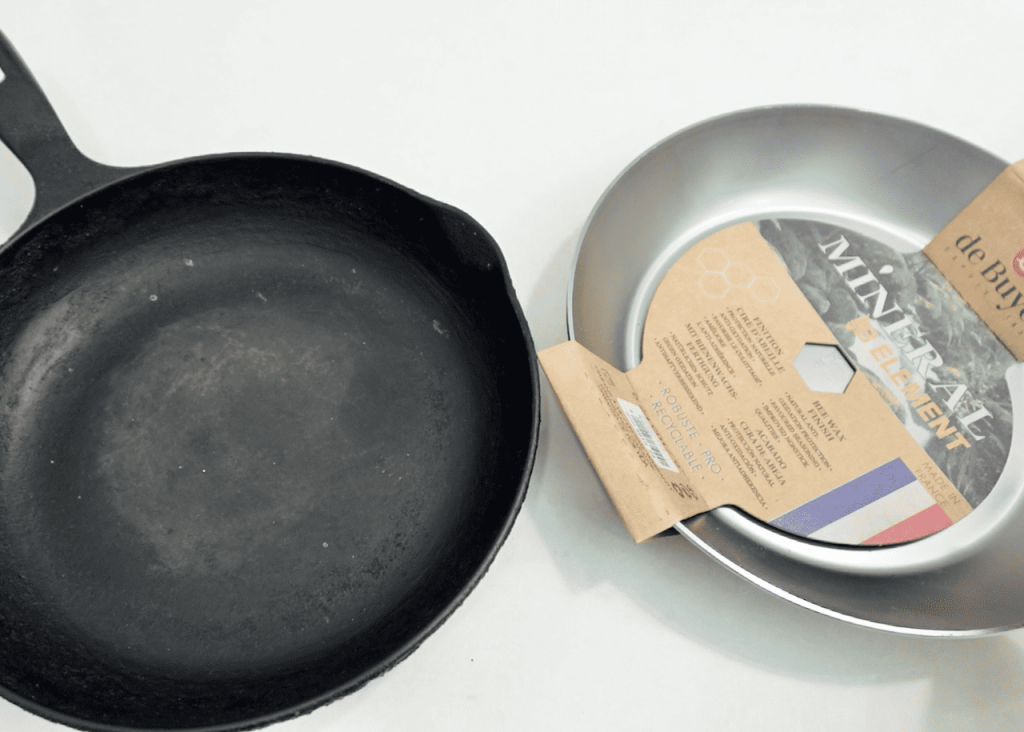
Carbon steel vs stainless steel pans
When it comes to carbon steel vs stainless steel, both have their perks. Carbon steel pans are awesome for heat retention and distribution, while stainless steel pans are really good at resisting corrosion and staining. Stainless steel, however, does not and will not ever have any non-stick qualities. I tend to use my stainless steel pans for stir-frying veggies, making sauces, steaming, boiling, or braising, and I do most of my frying and searing in carbon steel.
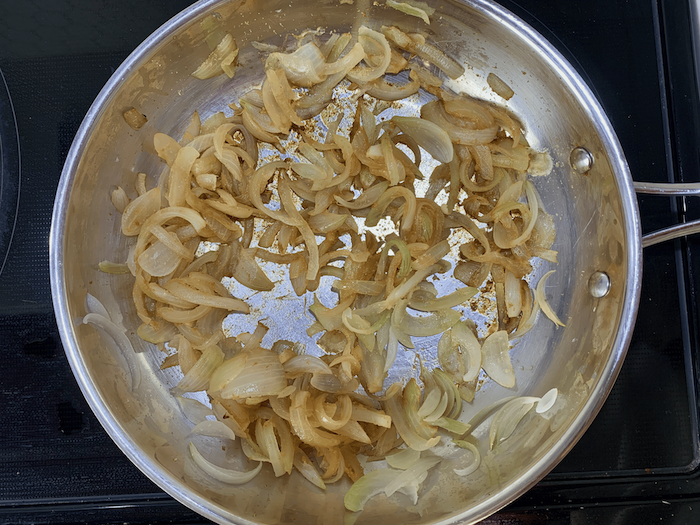
Seasoning a carbon steel pan
After seasoning three carbon steel pans using three different methods (the oven method, the potato peel method, and the stovetop oil-only method), I still wouldn’t consider myself an expert. But the method I found that worked best was the stovetop oil-only method as shown in this video from De Buyer. I used that method in my recent video where I discussed my carbon steel journey so far.
The De Buyer stovetop carbon steel seasoning process:
- Wash your new carbon steel pan with hot water to remove the protective beeswax coating
- Dry the pan, then heat it over medium-high with a thin layer of oil in the bottom.
- Cook for 10 minutes, swirling the pan around occasionally to get the oil up the sides.
- Remove from the heat and allow to cool.
- Drain the oil into a heatproof container (like an empty beer can) and dry the pan.
- Put the pan back on medium-high heat for 2 minutes.
- The pan should have developed a nice bronze finish across the bottom.

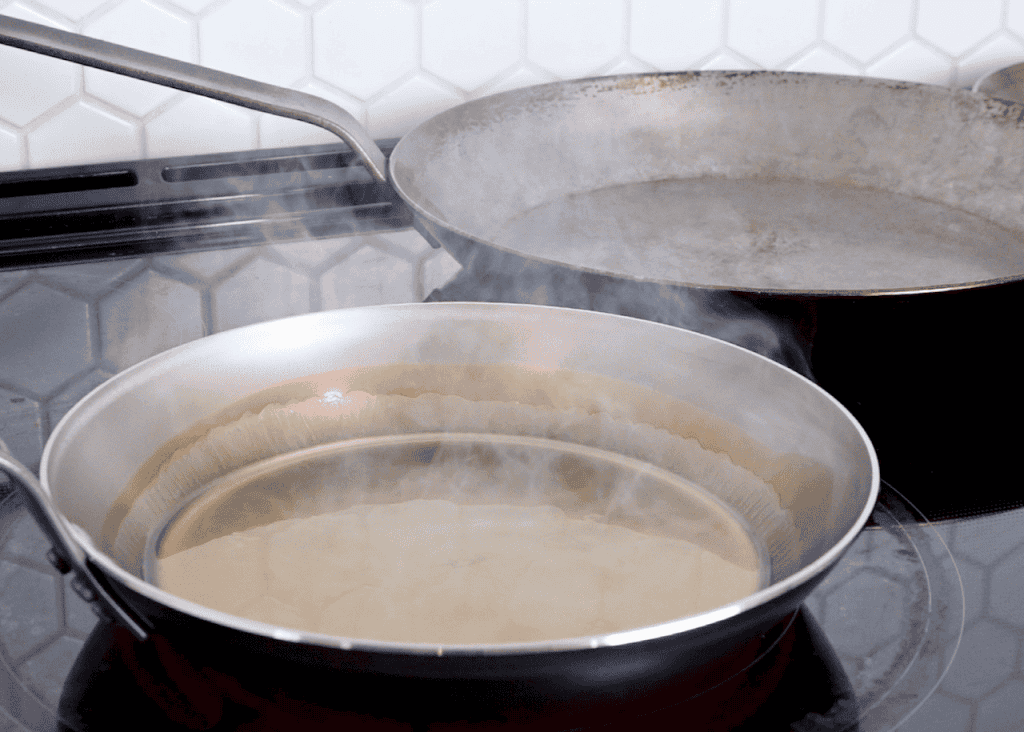
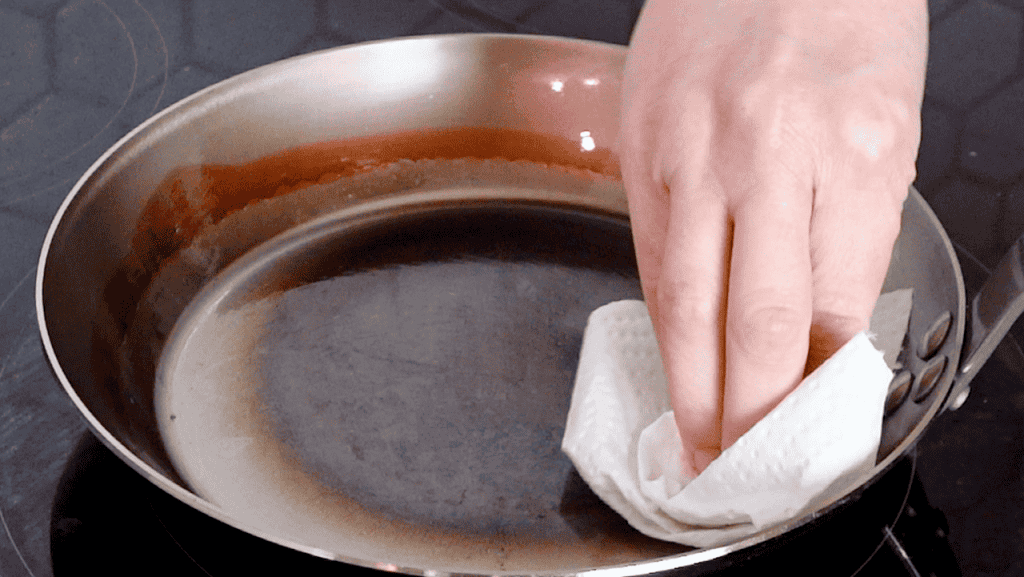
General care and maintenance
Once seasoned, it is best to wash your carbon steel pan with warm water and a not-too-aggressive scrub sponge. The experts advise to avoid soap, although I’ve heard that soap isn’t the end of the world.
Once clean, dry your pan completely to prevent rusting.
If your seasoned pan loses its seasoning or gets rusty, all is not lost! You just have to strip it down to it’s former self and repeat the seasoning process.
Carbon steel brands
There are plenty of companies making solid carbon steel pans, including Made In, Lodge, De Buyer, and Matfer. I have 2 De Buyer pans and one Matfer, so I can only speak to those.
Both brands are well-regarded and offer really high-quality options. Some folks (myself included) have had some issues with Matfer pans warping, but it is my understanding that they have fixed that issue in their newer models.
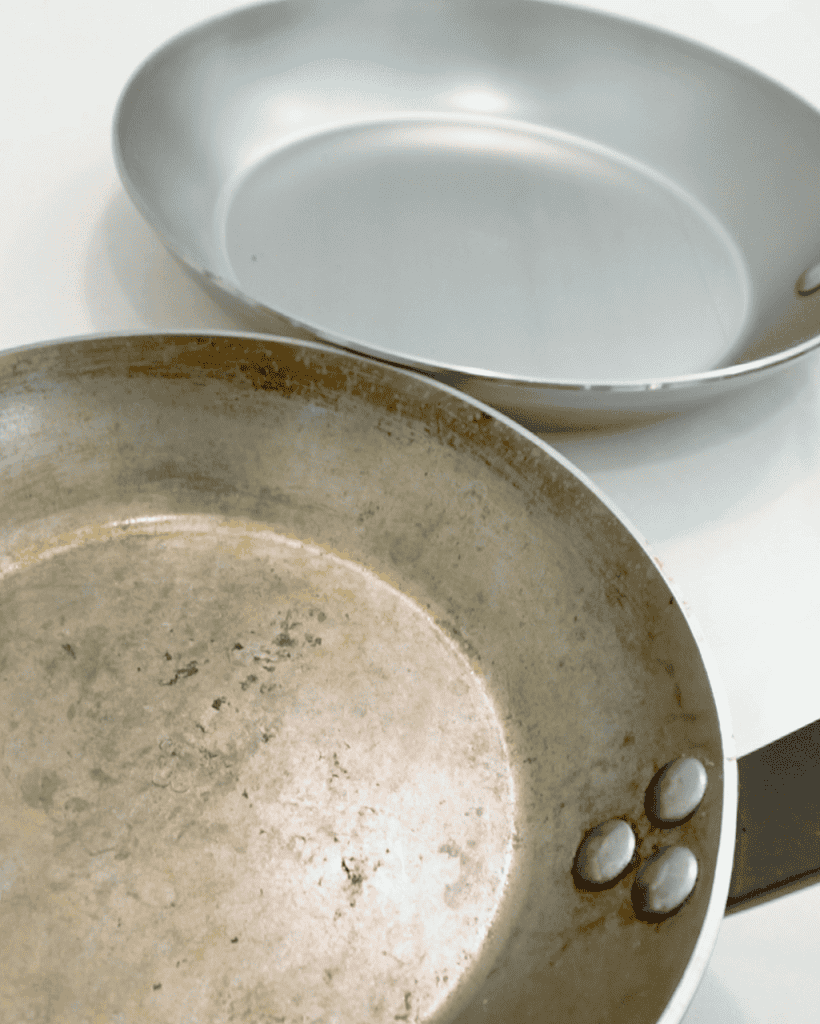
What to cook in a carbon steel pan
The main thing I like to cook in my carbon steel pans is the same thing I have always used Teflon pans for: Eggs! I like to fry and scramble eggs for breakfast, so a small non-stick pan is a must for me. I also enjoy using a larger pan for making fried rice, and scrambling a little egg into that. I will never (ever) try making scrambled eggs in a stainless steel pan. It’s a freaking nightmare!
Beyond eggs and fried rice, I find myself reaching for my carbon steel pans anytime I’m searing protein, like burgers, chicken, steak, or tofu, as well as making meat/veggie stir-fries. I love being able to get a bit of a sear on the meat before adding the veggies in.
I still have a Teflon griddle to cook large volumes of pancakes and french toast, but once that bites the dust I’ll probably replace it with a big rectangular carbon steel version.
Frequently asked questions
Are carbon steel pans safe for cooking?
According to the experts, carbon steel pans are totally safe for cooking. They are made of 99% iron and 1% carbon, and unlike Teflon, they don’t contain toxic substances that can leach into your food.
Do carbon steel pans need to be seasoned?
Yes, carbon steel pans need to be seasoned before their first use and re-seasoned regularly to maintain their non-stick properties.
How do I clean a carbon steel pan?
After cooking, allow your pan to cool. Once cool, clean it with warm water and a soft sponge or cloth. Avoid using soap or harsh scrubbers as this can strip the seasoning off the pan.
Can carbon steel pans be used on any type of stove?
Yes, carbon steel pans can be used on all types of stoves including gas, electric, induction, and even over an open fire.
Is rusting a problem with carbon steel pans?
If left unseasoned or if the pan is not dried properly after washing, it can rust. However, this rust can be removed with a little warm water and a scrubbing pad.
How often should I season my carbon steel pan?
This depends on how often you use your pan. If you use it daily, you may need to season it weekly. If you use it less frequently, you may only need to season it monthly.
A great alternative to non-stick pans!
Overall, I am happy with my decision to switch to carbon steel as an alternative to non-stick pans. It hasn’t always been easy, but I feel positive about the future of these pans, and all the delicious things I’ll make with them!
Alrighty, that’s everything I know (so far)! Let me know if you decide to take the plunge, and be sure to share your tips and tricks!
Looking for some ideas for what to cook in your new carbon steel pan?
- Try these Olive Oil Scrambled Eggs
- Or fry your egg for this Kimchi Egg Sandwich

